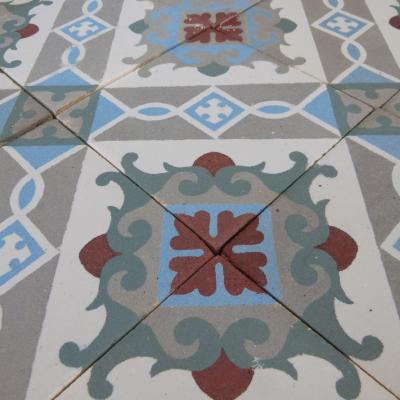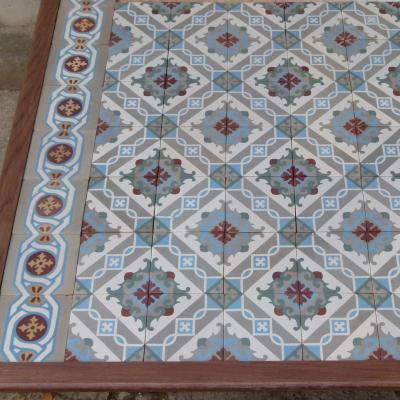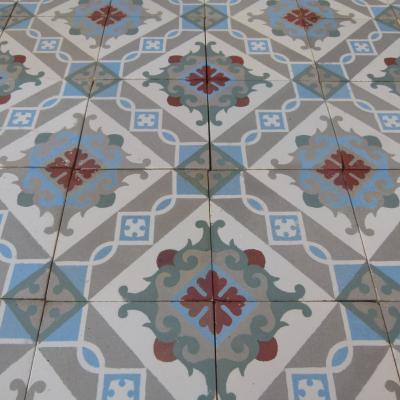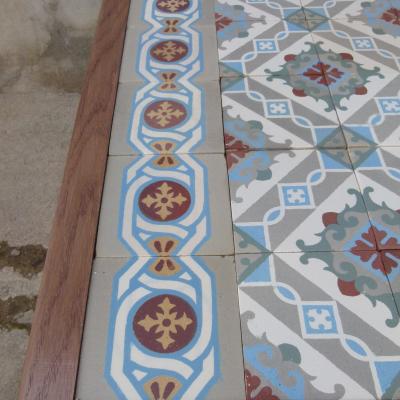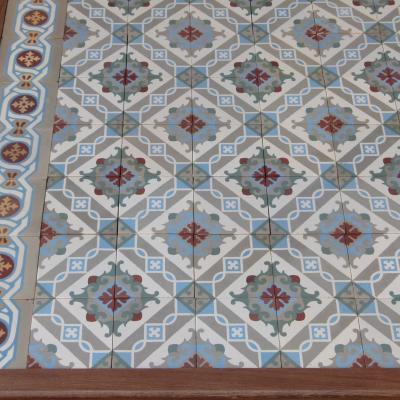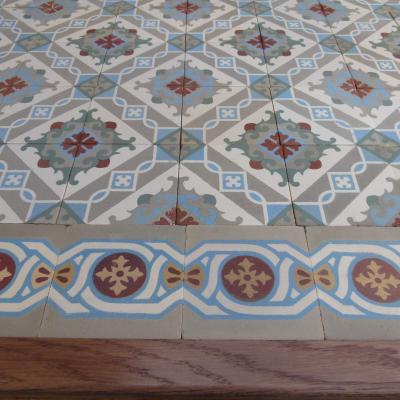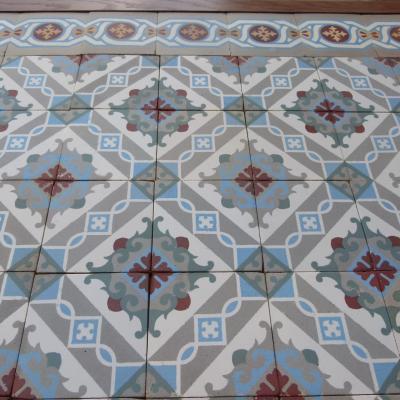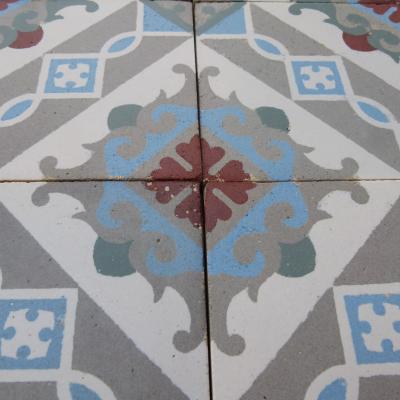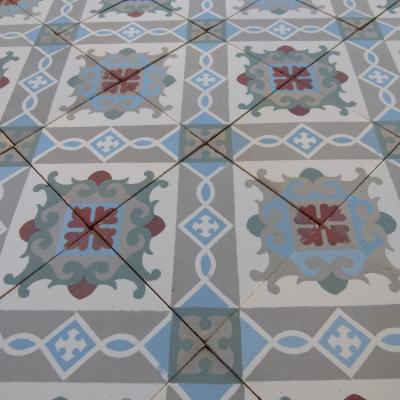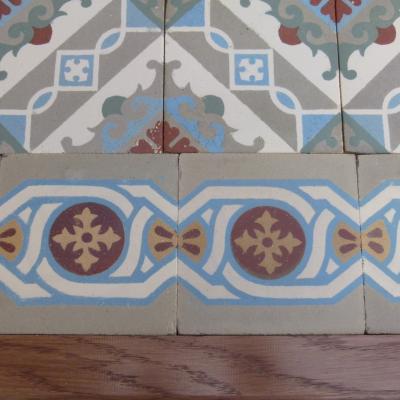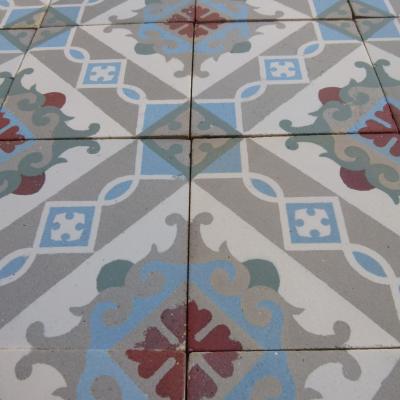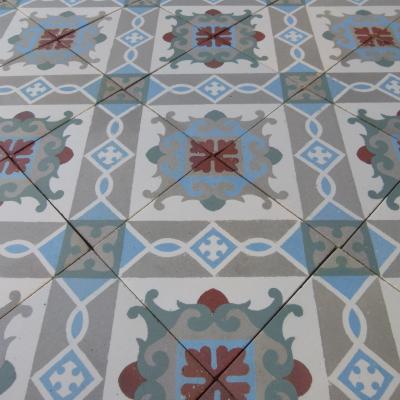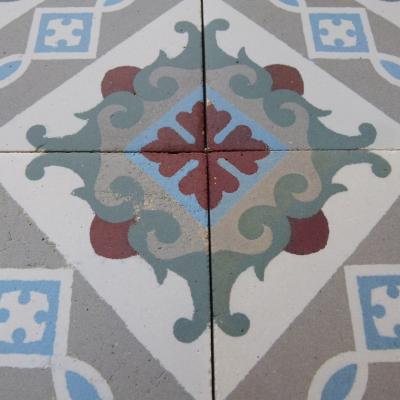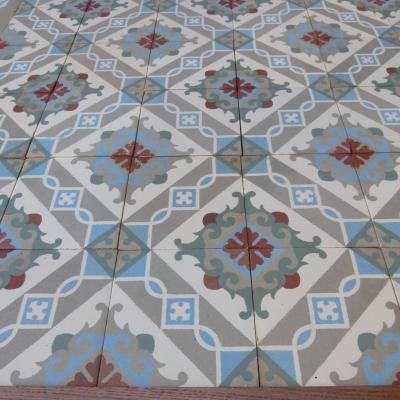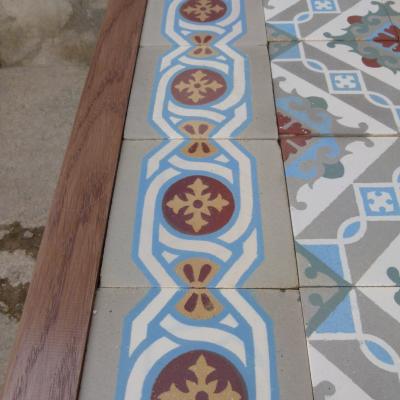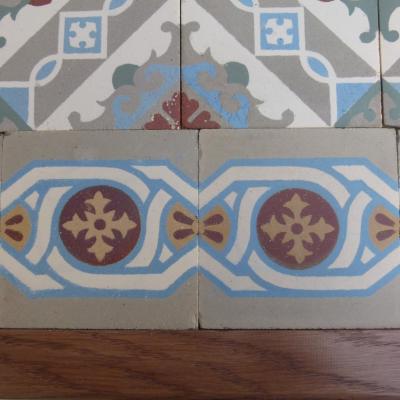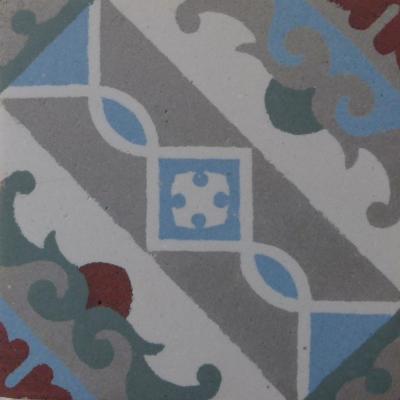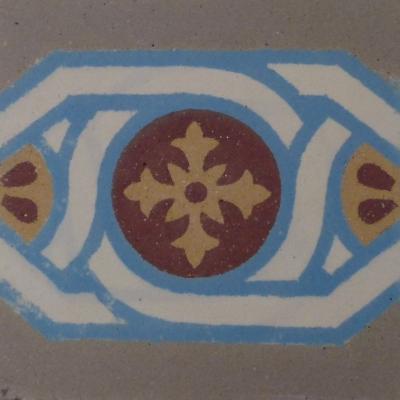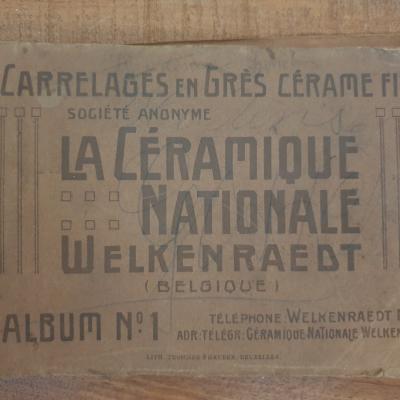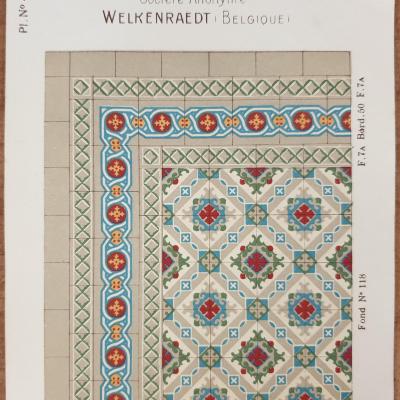Large 23m2+ Belgian ceramic floor in a classical tessellation 1910
A floor that feels measured, balanced, and in a subtle palette, this antique Belgian ceramic floor, dating from the early 20th century, is a masterclass in symmetry. Handmade by Société Anonyme La Céramique Nationale Welkenraedt and featured in their 1910 Album 1, it totals over 23m² (250 sq ft) and has been professionally restored, tile by tile, to its original grace.
At its heart lies a rhythmic tessellation—each 14.1cm (5.5 inch) square tile part of a repeating motif that alternates between two colourways, creating a gentle visual cadence. The palette is cool and composed: soft greens and blues, muted greys, warm burgundy, mustard, and off-white. Together, they form a design that is both structured and fluid, classical yet quietly expressive.
The border tiles complete the composition with a sense of enclosure and elegance. The symmetry is not just visual—it’s spatial. This floor brings order and calm to any room it inhabits. Highly fired and frost-resistant, it’s suitable for both interior and exterior use. But its true strength lies in its presence: a floor that doesn’t shout but sings of its perfect balance.
There are c.21m2+ of field tiles and c.2m2 of the border tiles; 97 border tiles in total, offering a total lay length for the borders of c.13.7 linear metres / 45 linear feet.
NOTE
Antique tiles were most commonly made in single or two tile moulds. Before current computer automation methods their moulds were made by hand and the colour slips mixed by eye. Kiln temperatures could also be variable, as could the firing time. The result is that often tiles display subtle size and thickness variations and there can be tonal variations in colours, owing to the slip mixing and/or firing time. All of this makes these handmade tiles unique and adds to their charm. Some floors display their subtle variations in size and tones, some not, but when photographing we always take a random section of the floor so that it is representative of the whole. A tiler should always dry lay a section of the tiles to familiarise himself with them before starting to fix lay.
CE295



